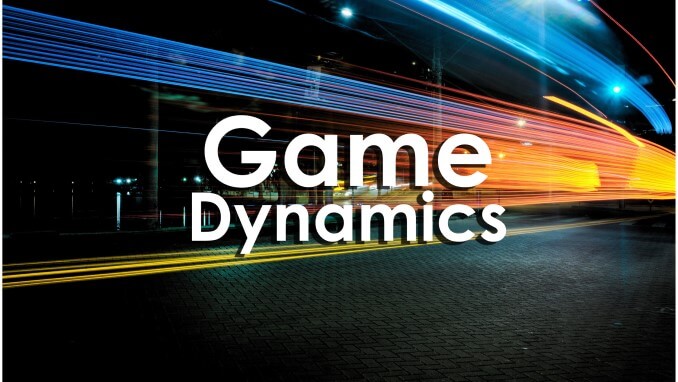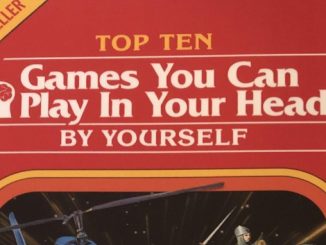
This article was originally published at UniversityXP and is re-published in Ludogogy by permission of the author.
Dynamics and loops are some of the most important elements of your game design. When thinking about your game dynamics it’s important to consider the following two questions:
- What actions can players take?
- How do those actions help them achieve the game objectives?
This article will dive deeper into what game dynamics are as well as how you can use them engage the player in the “core loop” of your game.
Describing game dynamics
Game dynamics are made up of the different actions that players can take in your game. For old standbys like Monopoly that includes rolling a pair of dice and then moving your pawn the appropriate number of spaces. For modern board games this could include placing your worker and gaining corn or another resource. For tile laying games like Carcassone this means playing one of your tiles and then letting the board grown from there.
These are the different actions that players can take in your game. Alone they are meaningful for the player; but together they form the game’s dynamic.
Specifically, the dynamic of the game is the larger changes that occur as a result of players’ actions.
Types of dynamics
The kind of actions that players can take can be incredibly varied. Even more so when you consider the different types of games that use the same kind of actions (i.e. roll and move, tile laying, worker placement etc…)
The larger game dynamic unfolds when these players use these actions in relation to other players. However, the choice of their actions is dependent on the objective of the game. Are players attempting to achieve a specific outcome for themselves? Are they attempting to achieve something together? Are they trying to accomplish something in the game?
The difference in these objectives affect the different types of dynamics which include:
- Competition
- Cooperation
- Narrative
- Social / Party
- Progression / Legacy
Each type of game dynamic connects players’ actions to the objective in the game. Competitive games are meant to determine a single person or a team the winner. Cooperative games are meant to enable players to work together to achieve a common goal.
Narrative dynamics have players exploring the story of the game. Social / party games are meant to primarily host fun interactions between players. Progression / legacy games are meant to reward players for repeated plays where more content is unlocked over time.
When players take these actions in games, they create a pattern of loops that become part of a larger sequence of play.
These patterns of loops that players take are the core loop. The core loop is the main way that players play your game.
Examples of dynamics
An example of a competitive dynamic is in chess where players move their pieces legally until one player’s king is trapped and can no longer move.
Conversely, a game like Pandemic has a cooperative dynamic where players take actions until either one of the following two outcomes occur: either the viruses are eliminated or the viruses take over the planet.
Similarly, the classic table top role-playing game Dungeons and Dragons is heavily dependent on the narrative dynamic. That is where players experience a world and a story together as their characters.
Levels of dynamics
Dynamics can further be broken down into different levels. Those levels include:
- Primary Dynamics
- Secondary Dynamics
- Main Dynamics
Primary dynamics are the summative types of actions which move the game state forward. They can be seen in poker whenever a player folds. When all players fold the hand is over and a new hand is dealt.
Secondary dynamics on the other hand changes the players’ state. In Battleship a player calls out a coordinate: that coordinate results in either a hit or a miss. The result of which changes the player’s board and determines how many more shots they can sustain.
Lastly, main dynamics change both the game state as well as the player’s state. In the social deduction game Werewolf the villagers can nominate to eliminate a player. If that person is a werewolf then a player is lost and the villager team moves one step closer to victory.
Tension in dynamics
Dynamics are one of the best ways for designers to create tension in games because they already harness player motivations to achieve the objective of the game.
Specifically, primary dynamics causes tension from the game. Secondary dynamics cause tension for other players. Finally, main dynamics cause tension for the players from the game.
Rhythm in dynamics
Dynamics are present in games represent two different types of actions: mainly their breadth and depth. The dynamics generated by players determine the pace of the activity and the game. That pace is highly subjective and one that designers aim to identify in their designs.
You can have long euro games that play at a fast pace and short filler games that have a slower pace. That means that controlling for this pace is also another aspect of designing dynamics for games. The way that these primary, secondary, and main dynamics play with each other also determine the pace of the game. That pace is what gives the game its’ unique signature.
Takeaways
There are several types of dynamics which are determined by the objective of the game. Those include competitive dynamics, cooperative dynamics, narrative, social, as well as progression and legacy dynamics.
Dynamics are ultimately created by the designer but utilized by the player. They are a pattern of loops that becomes a larger sequence of play.
Those dynamics include three levels in primary, secondary, and main dynamics. Each level serves to affect and influence the player on several different levels. Each level allows the game to create tension from player decisions. The interplay between player decisions is what gives a game a specific signature.
This article addressed dynamics and loops in table top game design. To learn more about dynamics in gamification check out the free course on Gamification Explained.
If you have enjoyed this article – consider getting yourself lifetime access to his Games-Based Learning Digital Library containing all of the content from the past two Games-Based Learning Virtual Conferences; past webinars and courses he’s created; as well as his complete back catalogue of articles; podcast episodes; and videos. And more content is being added all the time.
Readers of Ludogogy can get a $50 discount on this valuable resource by using this link.
- How do you Design Games for Flow State - 26th January 2024
- Accessibility in Games - 22nd November 2023
- What are Megagames? - 5th September 2023





Be the first to comment